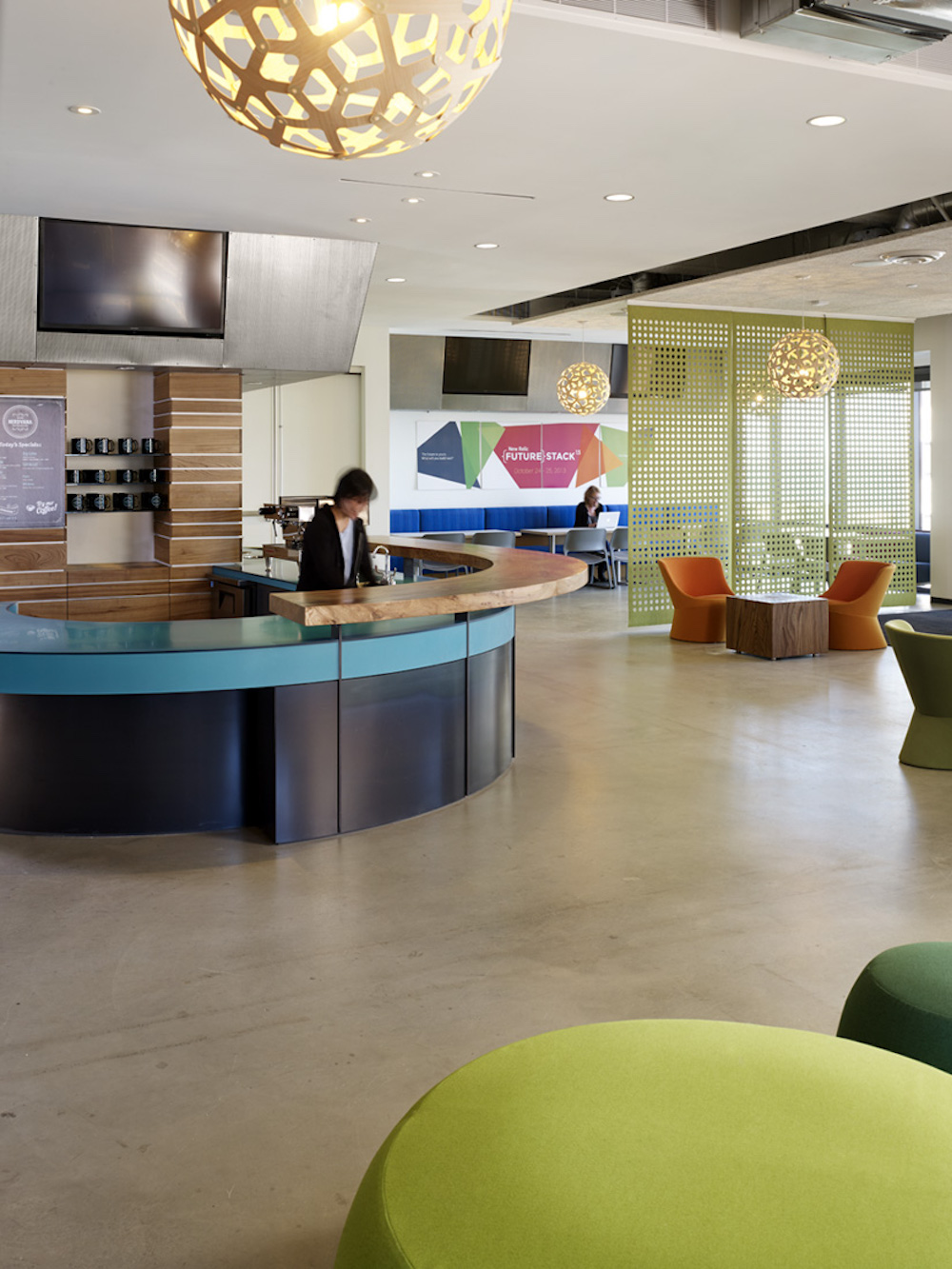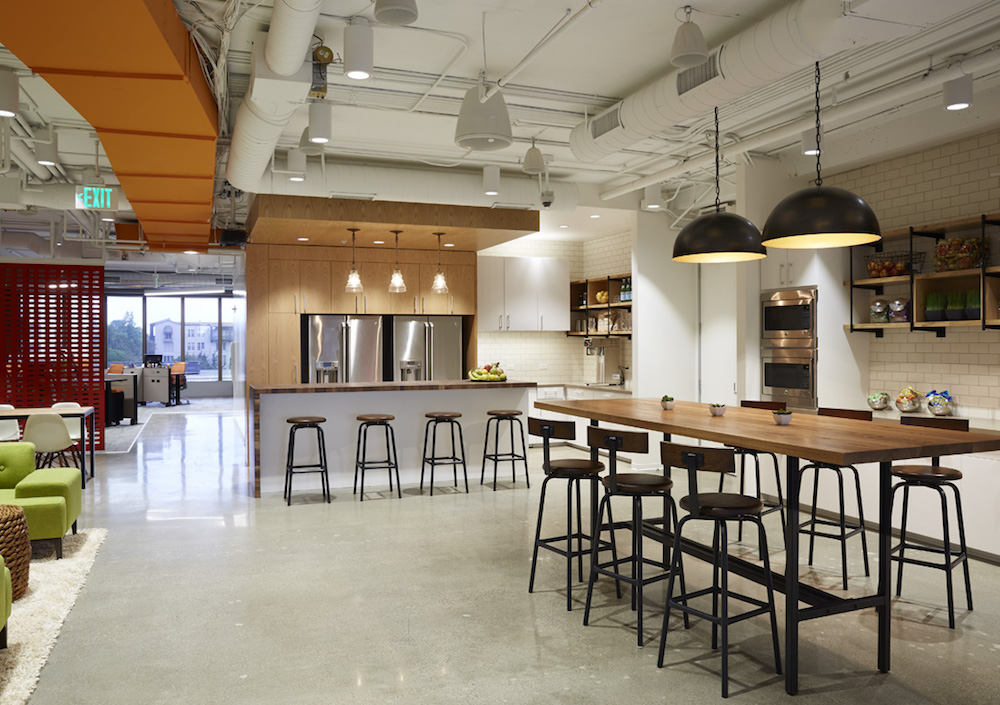In part two of this series on branding, Robin Weckesser of a3 Workplace Strategies explores tips for implementing a branding strategy. Check out part one here.

As the pandemic lingers and employees slowly return to the office, executives’ foremost responsibility is to ensure that proper health and safety protocols are in place. At the same time, we have an opportunity to reflect on workplace culture, branding, and marketing to foster long-term success.
Business leaders often view workplace culture and branding as a one-or-the-other proposition. But today, more than ever, the two are inextricably linked.
When you address culture and brand simultaneously, you’ll discover these two parts of any corporate psyche have a mutually beneficial symbiosis. Your company culture can drive your brand, and your brand—now on a solid foundation—can reinforce the culture.
So what comes first: workplace culture or the brand? It’s a chicken and the egg scenario, and it’s a trick question.
Positive culture feeds into a successful, effective brand. Similarly, your brand will sputter if your workforce isn’t committed to the culture or if the culture is simply a bad fit. If there’s an exciting buzz that permeates your organization’s culture, an energy around the product, and a pride in mission, the culture will coalesce.
Once your organization accepts and embraces the unbreakable bond between culture and brand, you will have taken the first step toward unlocking the combined power of both. And when HR and marketing work together to develop, communicate, and promote the brand and culture, you give your company the best chance to make both successful.

Back to Basics, and Branding through Space Planning
For good reason, your brand should be tied to your business philosophy. This connection empowers you and your staff and inspires your clients and stakeholders to trust in something they can relate to. Akin to how your brand affects both employees and clients, your office can achieve the same effect. Apart from being a functional place of business, your physical space can help create an exciting work culture that’s marketable to the world, demonstrating a strong brand identity and boosting your core values.
Considering your core values is the best first step toward conveying your business philosophy. Stress the importance of a strategic approach that includes an assessment of your organization’s demographics and work functions. Conducting an internal audit of this kind will allow you to determine which aspects of your culture are working are which aren’t. It will also help you validate your corporate identity, including mission statement and messaging.

As mentioned above, when branding your workplace, don’t underestimate the significance of your office layout. The two can be integrated! For years, companies have been moving away from traditional cubicle offices, opting for models that emphasize teamwork and collaboration. This concept still resonates to some extent, and mobility remains a key element in space planning, since it gives employees the opportunity to choose their own work station and network with co-workers. At the same time, new office protocols in the wake of the pandemic must be part of the equation. As such, physical distancing, seating arrangements, and privacy considerations are now increasingly important—and hybrid environments are particularly appealing as more employees continue to work from home.
In any event, a company that knows how to create a happy working environment can inspire creativity and improve productivity; it can market its brand and culture to attract and retain top talent that can hone your competitive edge.

Logos, Colors, Furnishings: How to Do It
As the main advocate of your brand, you should incorporate your logo into your design. The experience starts at the entry! Many creative options exist to create a dramatic effect on anyone entering your office. For example install LED downlights that accentuate a big 3D wall logo. Or consider a mural, graffiti, or a sculpture. A monitor wall that tells the story is another option to define the first impression. Just remember to make it big and bold, as it will enhance the philosophy that drives your culture and brand.
Your logo and associated branding guidelines can also be a great starting point when choosing the color palette of your office. Color is an important factor in branding, but bold, bright colors that may impress clients can be distracting for staff. Instead, consider blending neutral colors with the muted colors of your brand to create the perfect office color scheme. Additionally, you can be creative with colors and even step outside your comfort zone to accent your company’s aesthetic vision. This is where selection of an architect becomes a critical first step. Selection a design firm that has branding experience and understands the importance of integration is important.

Office furnishings and decorative pieces can also make a major statement and amplify your business philosophy loud and clear. Although your furniture should above all be practical, comfortable, and functional, well-chosen furniture can also relay innovation and creativity. Modern design elements dressed in company colors or colors that are complementary can project your personality, while soft textures are associated with a sense of well-being. Fused with strategically placed symbols of company and staff milestones and achievements, or identifiers of your products and services, these elements can be a great way to inspire creativity and build trust.
Many Happy Returns
In short, by branding your office space, you will help define your workplace culture. Part of this process involves engaging your staff to provide input into workplace design strategy and solutions. At a time when so many employees are anxious about change and uncertainty in the new normal, an empowered staff means a more loyal staff. It also translates into a tangible marketing tool that will help to grow your brand and build a more vital enterprise.

Branding should go beyond corporate colors, catchy taglines, and cool t-shirts, although these are great ways to reinforce the brand. Above all, a workplace brand is an investment in people and culture and the bottom line. If done right, it boosts morale, inspires, motivates, and creates an atmosphere that says, “This is a great place to work!”
But how, in these turbulent times, can you optimize your branding strategy? Increasingly, organizations are discovering the value of experienced, objective, and specialized workplace consultants—and they are partnering with project management firms that will oversee the entire process. That includes managing architects, general contractors, and other vendors who will work hand in hand with internal staff professionals. Of course, all project managers are not created equal, and part of your selection criteria should be to choose a firm that sees the big picture…that is strategic, holistic, communicates the excitement around the options, and understands the budget and schedule implications associated with change management.
You’re probably sold on the importance of branding and the need for change, and you probably don’t want to cut corners. But what about the cost? Can you afford the upfront investment to do it right? A better question—with the stakes so high and the risks so great—is: can you afford not to?

